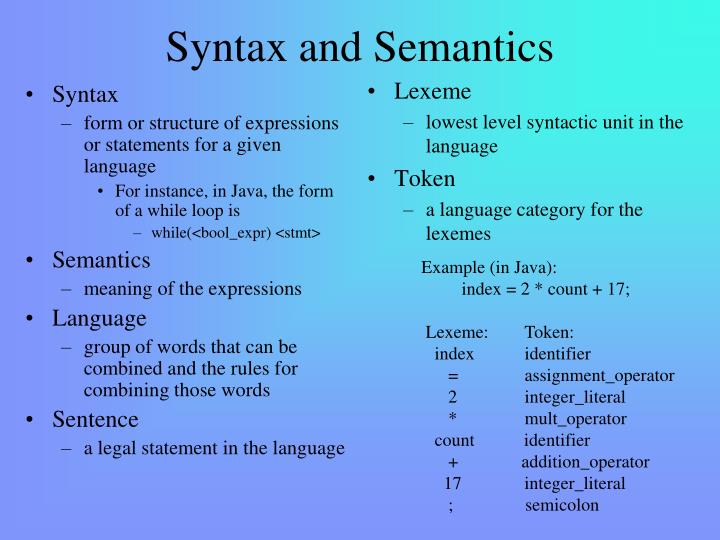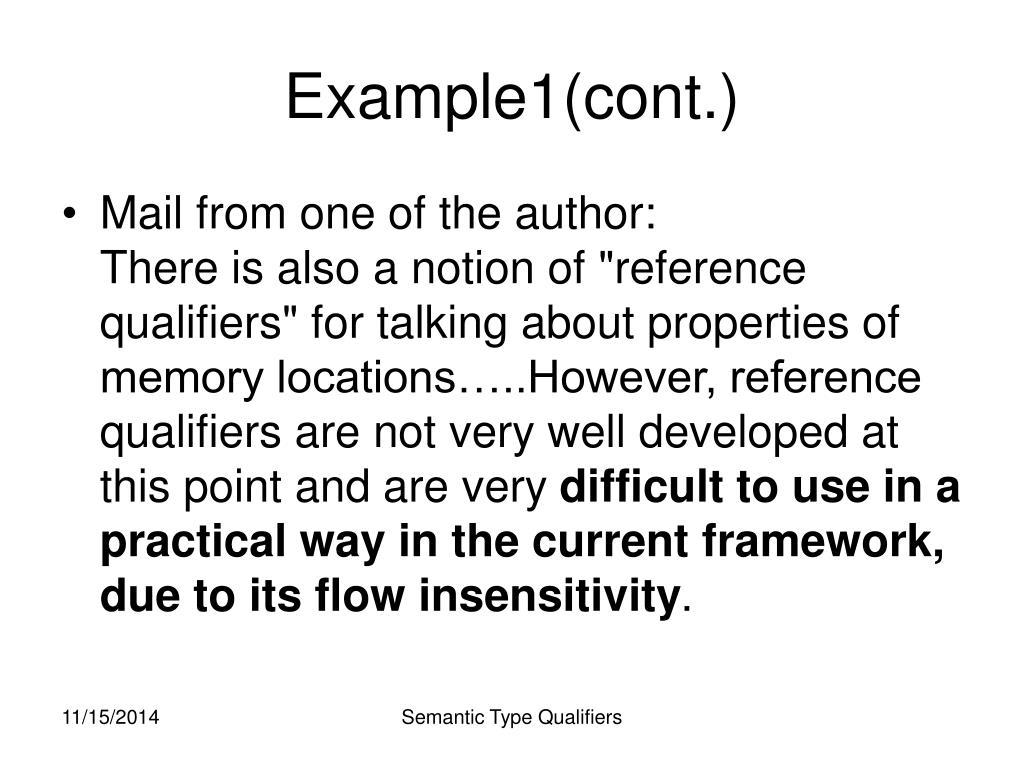

Wilkins, "Natural Tendencies of Semantic Change and the Search for Cognates" in The Comparative Method Reviewed, ed.

"Semantic change is not a change in meaning per se, but the addition of a meaning to the semantic system or the loss of a meaning from the semantic system while the form remains constant." The original meaning of a form is not immediately displaced by the innovated meaning, but the two coexist for some time. An innovation enters into a language and spreads through the speech community along socially determined lines.

Some semantic features are indicated by cues from syntactic (elements of spelling) and grammatical (elements of organisation) features. Using normal rules of syntax, our first example sentence means nothing. Like the word ‘troblem’ combining ‘trouble’ and ‘problem’, but there is a vast array of much more sophisticated semantic anomalies than that. Answer (1 of 7): A semantic feature is an element of meaning. (Edward Finegan, Language: Its Structure and Use, 6th ed. Answer: A semantic anomaly is a bit of language that does what it’s meant to do, but is abbormal. These new meanings did not replace earlier ones but extended the range of application for the words mouse and bookmark." Today, computers users utilize a mouse and bookmark Internet addresses. "Two well-known examples of semantic shift have remained popular since the Vietnam War, when hawk came to be used frequently for supporters of the war and dove for its opponents, extending the meaning of these words from the combative nature of hawks and the symbolically peaceful role of doves. If, in some real or imagined situation, someone named John purposely hits someone named Bill, then John is the agent and Bill is the patient of the hitting.Semantic Change Examples and Observations


 0 kommentar(er)
0 kommentar(er)
